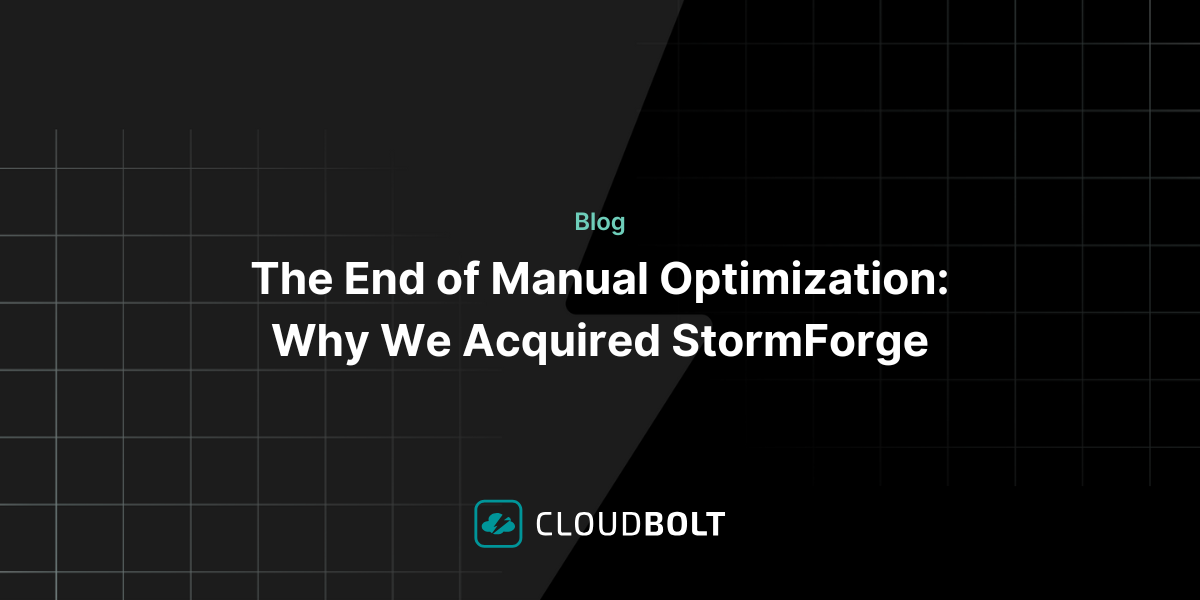How I Rethought Cloud Budgeting—And What Finance Leaders Need to Know
If you’re a finance leader trying to bring more structure and strategy to cloud budgeting, you’re not alone. While most organizations have embraced the cloud, many finance teams are still relying on legacy budgeting models that don’t reflect the fast-moving, usage-based nature of cloud spend.
As someone who’s spent nearly 30 years in finance, I’ve seen firsthand how the cloud has completely changed the way we plan, track, and manage spend.
For the first half of my career, I primarily worked with a capital expenditure (CapEx) model. Companies purchased physical assets, such as servers, storage, and networking gear, that were expected to last several years. As a result, accounting was relatively straightforward: I would simply depreciate the cost over time and budget accordingly.
But when cloud broke onto the scene, the IT budgeting process as I knew it was turned upside down. What eventually became our largest expense—surpassing even headcount—was no longer fixed, but a variable cost that fluctuated in real time. As you can imagine, forecasting and control became much more challenging.
According to the FinOps Foundation’s 2025 State of FinOps report, reducing waste and improving the accuracy of spend forecasting are among the top priorities for both finance and FinOps teams. But while the need is clear, many teams still lack a clear framework for making that shift.
Today, as VP of Finance at CloudBolt with a decade of cloud financial management experience under my belt, I follow five key principles that help me approach cloud budgeting with confidence—despite all the complexity. From dynamic forecasting to cost accountability, cross-functional collaboration, tagging discipline, and real-time responsiveness, these are the principles that helped me evolve my approach—and they can help any finance leader close the gap between legacy processes and cloud-first realities.
1. Traditional budgeting and forecasting models fail in the cloud.
Since cloud costs fluctuate based on real-time activity, companies that attempt to set rigid annual budgets often find themselves off course within months. The traditional approach to budgeting simply doesn’t hold up.
Instead, I recommend implementing rolling forecasts.
At CloudBolt, we monitor our cloud usage and spending in real time and update our projections quarterly. This allows us to make adjustments based on current realities rather than outdated assumptions. If spending starts rising unexpectedly, we can investigate the cause, optimize or reduce it where needed, and adjust priorities before it becomes a major budget issue.
Just because I’m not chasing an exact number, however, doesn’t mean teams have free rein to spend however they want. I still recommend implementing guardrails, such as cloud budget thresholds or usage caps, to ensure effective management. This is where tools can be invaluable, whether it’s alerts for when spend exceeds a certain threshold or automation that powers down non-critical resources after hours. These safeguards help keep cloud spend aligned with business priorities.
2. Finance alone can’t own cloud costs.
In traditional IT budgeting, finance sets the budget, and IT stays within it. That worked when spending was predictable.
With cloud, that’s no longer the case.
I can’t stress enough how important it is for finance and engineering to share accountability for cloud costs. While finance manages the budget, engineering makes the day-to-day decisions that drive those costs.
At CloudBolt, we have built a FinOps team that includes me, our Chief Technology and Product Officer, Kyle Campos, and our VP of Engineering, Nimesh Manmohanlal.
Every month, we meet to review cloud costs, discuss the factors driving changes, and explore ways to optimize our cloud spending.
These conversations sometimes reveal competing priorities—and we may have some spirited discussions—but that’s precisely why they matter.
When finance and engineering come together, we can gain a deeper understanding of each other’s perspectives and strike the right balance between cost efficiency and business needs.
3. Cloud spend isn’t just an IT cost—it’s a business cost.
One of the most significant mindset shifts I had to make was learning to treat cloud spend as a strategic business investment, not just another IT line item.
Cloud enables growth and innovation in numerous ways—from accelerating product development and scaling on demand to allowing teams to test new ideas quickly. It’s become less about controlling costs and more about maximizing value.
So instead of asking, “How much can we cut?” I began asking, “How can we make cloud spend work more effectively for the business?” In other words, I started thinking in terms of cloud ROI—a way to connect our cloud investments to real business value, rather than just cost. That also means understanding when higher spending is justified. For example, if we are rolling out a major platform upgrade, we might temporarily double certain costs to support the transition. Finance needs to be aligned with R&D and product initiatives so we can budget strategically—not just to control costs, but to support growth and drive innovation.
This perspective led me to shift from setting static budgets based on last year’s usage to aligning cloud spend with business priorities—whether that’s revenue growth, product development, or customer success. That way, we could invest intentionally and stay ahead of both unexpected cost spikes and expected increases tied to strategic initiatives.
4. Cost visibility & tagging are non-negotiable.
If there’s one thing that can make or break a company’s cloud cost strategy, it’s visibility.
One of the easiest ways engineers can support finance is through consistent tagging. When resources are tagged by department and project, it provides finance with a clear view of where every dollar is allocated. This makes financial reporting and optimization much easier.
If you can’t see what’s driving cloud spend, you can’t control it. And if you can’t control it, you certainly can’t improve it.
Finance leaders should advocate for clear tagging policies, conduct regular audits of untagged resources, and utilize FinOps tools that automatically categorize spend based on usage patterns. It’s not about policing spend—it’s about unlocking the data you need to make smart, business-aligned decisions.
5. Cloud cost accountability must be proactive, not reactive.
With the cloud’s pay-as-you-go model, costs can escalate quickly without much warning.
The companies that succeed in managing cloud spend don’t wait for the invoice to see what happened. They put systems in place to catch anomalies early.
Real-time alerts for spending spikes, automated budget tracking, and accountability frameworks that empower engineering teams to manage their own budgets make a huge difference.
For finance teams transitioning to the cloud, this is one of the most complex yet crucial adjustments to make. You can’t rely on the old model of setting a budget and reviewing expenses afterward. You need to anticipate, monitor, and adapt in real time.
Final thoughts: How finance leaders can get ahead
Cloud budgeting is challenging—but it’s far from impossible. The finance teams that succeed are those that embrace the cloud as a business driver, not just an IT expense.
It requires new habits: forecasting in shorter cycles, partnering more closely with engineering, and treating visibility as essential rather than optional. It also means letting go of outdated processes and leaning into a more dynamic, collaborative approach.
If you’re struggling with cloud budgeting, automation can change the game. CloudBolt’s Augmented FinOps approach brings structure, predictability, and real-time cost insights into your financial strategy—so you can stay agile while staying in control.
It’s the kind of solution I wish I had when I first started managing cloud spend—and the kind I rely on now to keep the business moving forward.
See How CloudBolt Helps Finance Teams Master Cloud Spend
Request a demo

Related Blogs

The End of Manual Optimization: Why We Acquired StormForge
Today is a big day for CloudBolt—we’ve officially announced our acquisition of StormForge. This marks a major milestone for us…

